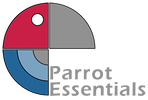Volunteers build homes to save the Turquoise Parrot
Posted by Parrot Essentials on 30th Oct 2015
Your garden is an ideal place to relax and if you lucky to enjoy a nice sunny weather. Apart from you and your friends there are birds and wildlife that loves to spend time there too. If you want to make their visit even more pleasant then browse the vast range of products for wild bird that we offer at Parrot Essentials.
In England, we are very lucky to have so many of the Alexandrine parrots in the wild. We can admire and look after them. Many of us build nest boxes or grow fruit plants from which the parakeets can eat. However, we are not the only ones who can enjoy the presence of parrots in their gardens and park. There are many bird species native to Australia. There you can see endangered birds, but some are not just there to see those species there are people and organisations that are trying to prevent further decline in such species.
Turquoise Parrot
Turquoise parrot is an Australian bird that is well-known around the Sydney district. This is a very beautiful little bird with brightly coloured feathers. These parrots have a blue face, gold and yellow belly, and the male species have a red wing bar on the back.
This attractive parrot is not listed as endangered, but there are suspicious that this will eventually happen if no precautious take place soon.
Goulburn Broken Catchment Management Authority has started projects which aim to prevent their extinction. The latest project GBCMA works on is called “Bed and Breakfast for Birds”. It includes providing the “beds” which are the nest boxes, and the “breakfast” which is the fruit plants.
There is a strong community engagement in the projects for protecting these little attractive birds. Farmers have been erecting nest boxes, which attracts birds and encourages their survival, says ABC.
 Graham Colson is one of those active farmers who have been building boxes and he shares that only on his farm he has around 50 boxes. He is also growing fruit plants especially for the Turquoise parrot.
Graham Colson is one of those active farmers who have been building boxes and he shares that only on his farm he has around 50 boxes. He is also growing fruit plants especially for the Turquoise parrot.
The projects are very beneficial for breeding these parrots and increasing their number in the wild. For 2 years they have been using the nest boxes and laying eggs in them, says Mr Colson.
Janice Mentiplay-Smith from GBCMA said that there were workshops showing how to create a nest box for this type of birds. She also shares that over 90 people have joined the workshop. The positive results from the workshop is proved by the fact that there are birds using and nesting in these boxes.
The post Volunteers build homes to save the Turquoise Parrot appeared first on Parrot Essentials.

